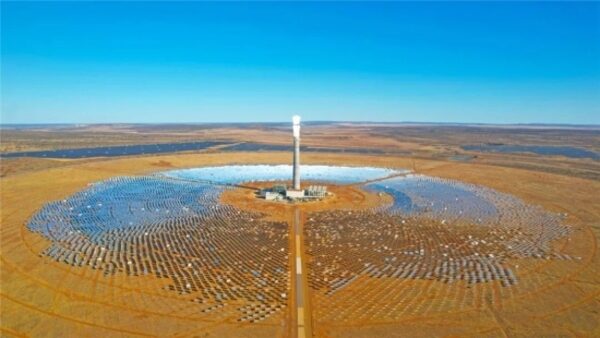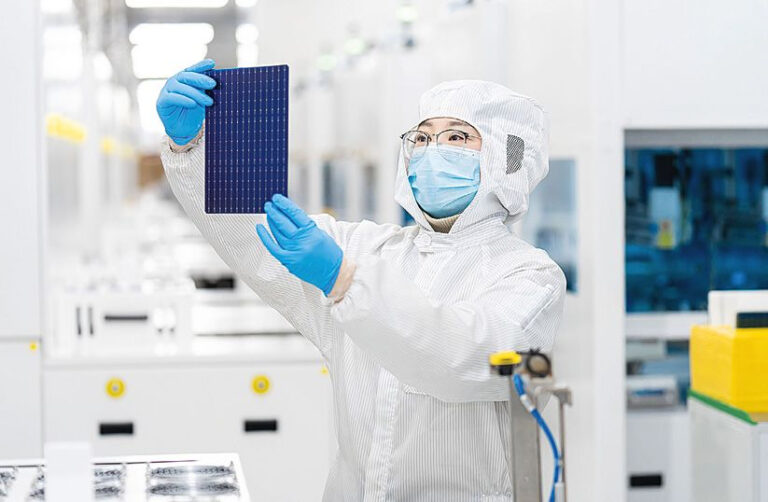The PV module supply chain is making steady progress. Efficiency increases, input cost savings and throughput improvements deliver cheaper, more powerful products. They involve a sometimes chaotic chorus of rumors, disputes, claims and counterclaims as manufacturers compete for competitive advantage.
In 2024, such conflicts have become increasingly important amid patent infringement investigations and lawsuits over TOPCon solar cell technology. Facing intense financial pressure amid rock-bottom prices, crystalline silicon (c-Si) manufacturers are turning to legal action to stay ahead. Somewhat surprisingly, it’s not just c-Si manufacturers who are insulting TOPCon.
Intellectual property (IP) disputes are now emerging at a point where TOPCon is the dominant technology. After rapid growth, TOPCon’s negatively doped “n-type” solar energy production capacity surpasses that of the PV industry’s previous workhorse – positively doped, “p-type” passivated emitter back cell (PERC) solar, according to the British research consultancy Exawatt.
Current technology development and pricing environment may explain the wave of IP claims. What impact will they have on the wider sector? While IP protection promotes R&D innovation and investment, the uncertainty it sows can have an outsized impact downstream, inflating module prices in some markets and delaying PV deployment. The IP approach of Chinese companies in particular is often questioned.
Investigate impact
“I can’t help but feel that now that these things are being started, pv magazine reports on it diligently, but not much is actually happening,” said Jenny Chase, solar energy analyst at BloombergNEF. “PV technology is developing faster than the law, so IP disputes do not have a major impact on the market.”
There is evidence that Chase’s view is correct. In March 2019, Hanwha Qcells and its subsidiaries filed patent infringement complaints in the United States, Germany and Australia regarding the passivation technology it used in the production of PERC solar panels. The claims were against JinkoSolar, Longi Solar and REC.
There were gains and losses for Qcells, plus a counterclaim from REC over module technology in the United States. By the time the cases were heard in court, the transition to TOPCon was already underway. Qcells withdrew from Australia in 2024.
The current TOPCon patent conflicts are becoming increasingly disruptive. The technology is emerging, but it is doubtful that anything meaningful will come from the lawsuits, and an unexpected newcomer has now joined the fray.
Thin tufts
In July 2024, First Solar announced that it had started an investigation into whether TOPCon’s intellectual property acquired in 2013 is now being used unlawfully. First Solar acquired a number of patents when it bought California-based crystalline silicon startup TetraSun. Research often precedes action in patent claims.
At the time of the acquisition, the now-closed website Greentech Media reported that TetraSun was “a 14-employee startup with $12 million in investors and little more than a pilot cell factory.” First Solar had indicated it would begin commercial production of the technology in the second half of 2014.
The technology being developed was unidentified, but included features common to n-type TOPCon – specifically a temperature coefficient of -0.3%, according to a preliminary data sheet. TetraSun also attempted copper metallization, something that largely eludes today’s manufacturers.
Announcing the IP investigation, Jason Dymbort, general counsel of First Solar, said the thin-film manufacturer’s “R&D and intellectual property portfolio includes several semiconductor platforms, including crystalline silicon, as we pursue multiple paths toward our goal of developing the next transformative, disruptive solar technology. ”
First Solar ended its TetraSun program in July 2016. No spokesperson was made available pv magazine for comment on the IP case.
“Patents are important to provide inventors and innovative companies with a good return on their investments,” says Pierre Verlinden, former chief scientist at Chinese giant Trina Solar and now an independent consultant for solar energy production. He added that the TetraSun patent search could allow the manufacturer to use IP to “attack their competitors who produce silicon TOPCon cells.”
Balancing act
Verlinden acknowledged that PV patent disputes pose a somewhat “difficult issue” for him. As a former director at German perovskite tandem developer Oxford PV and technology manager at Trina Solar, he is familiar with the Chinese and Western solar energy industries.
“From an idealistic point of view, I would like to see more technology cooperation at the global level, from research institutions and industry, and competition at the implementation level,” Verlinden said. “This has been happening effectively in China for years, with more informal exchanges between companies and standardization of processes, design and supply chain.” This results in winners based on execution and “an accelerated learning curve” for the sector.
Chinese manufacturers are joining the battle for TOPCon patents. In April 2024, Singapore-based n-type manufacturer Maxeon, which produces in China, announced a TOPCon patent infringement lawsuit in the United States against Qcells, following similar action a month earlier against Canadian Solar and REC.
YES Solar told pv magazinein August 2024, that it filed two cases in Europe regarding aspects of TOPCon production. A month earlier, Trina Solar said it was investigating whether its TOPCon patents had been infringed. A spokesperson for Trina said the company hoped a licensing agreement, or other legal remedy, could avoid a lawsuit. Trina had reached a TOPCon licensing agreement with Qcells in February 2024.
China IP
Filing claims in the United States and Europe is relevant. Defending “artificially high prices” for solar energy in the United States has value for First Solar, Qcells and to a lesser extent Maxeon, according to BloombergNEF’s Chase, who added: “First Solar is good at manufacturing, at being a solar energy company, but also good at being a lawyer.”
According to Chinese solar expert Frank Haugwitz, a consultant at Apricum, the average selling prices (ASPs) of PV modules in China reached $0.11/W in July 2024. Investment bank Roth Capital estimates that ASPs will be around $0.31/W in the United States in the second quarter of 2024.
Moving personnel between companies makes knowledge transfer common in China’s solar sector, Chase said, allowing the industry “to innovate so quickly, which is probably a good thing.”
While there is a lot of homegrown innovation in Chinese solar manufacturing today, companies were accused of disrespecting their intellectual property in the early stages of the industry’s development there.
Torsten Brammer was co-founder and long-serving CEO of LED metrology equipment supplier Wavelabs. He said intellectual property in China can be effectively protected, with the right strategy.
“If you have a bright idea, I encourage you to apply for patents in China,” Brammer said. “I have had positive experiences with the Chinese patent system, but it is crucial that a local IP expert guides you through the process.” He noted that there are many “cross-licensing agreements” in the industry, which are generally not made public. “Keep in mind that Chinese industry is eager to adopt the best solutions, so making your patented innovation available and considering collaboration can lead to faster rollout and overall broader business success.”
As TOPCon enters the mainstream and heterojunction waits in the wings, perovskite tandem technology looks set to introduce the next generation of high-efficiency PV. Oxford PV has long been a leader in perovskite tandem development, as evidenced by the 26.9% efficient module it unveiled in June. Yet the country faces stiff competition from Chinese rivals.
The company’s Chief Technology Officer, Chris Case, takes a somewhat philosophical approach to IP. “Competition is a form of flattery: if people copy what you do, they’re doing it because it’s a good idea,” he said.
This content is copyrighted and may not be reused. If you would like to collaborate with us and reuse some of our content, please contact: editors@pv-magazine.com.
Popular content



